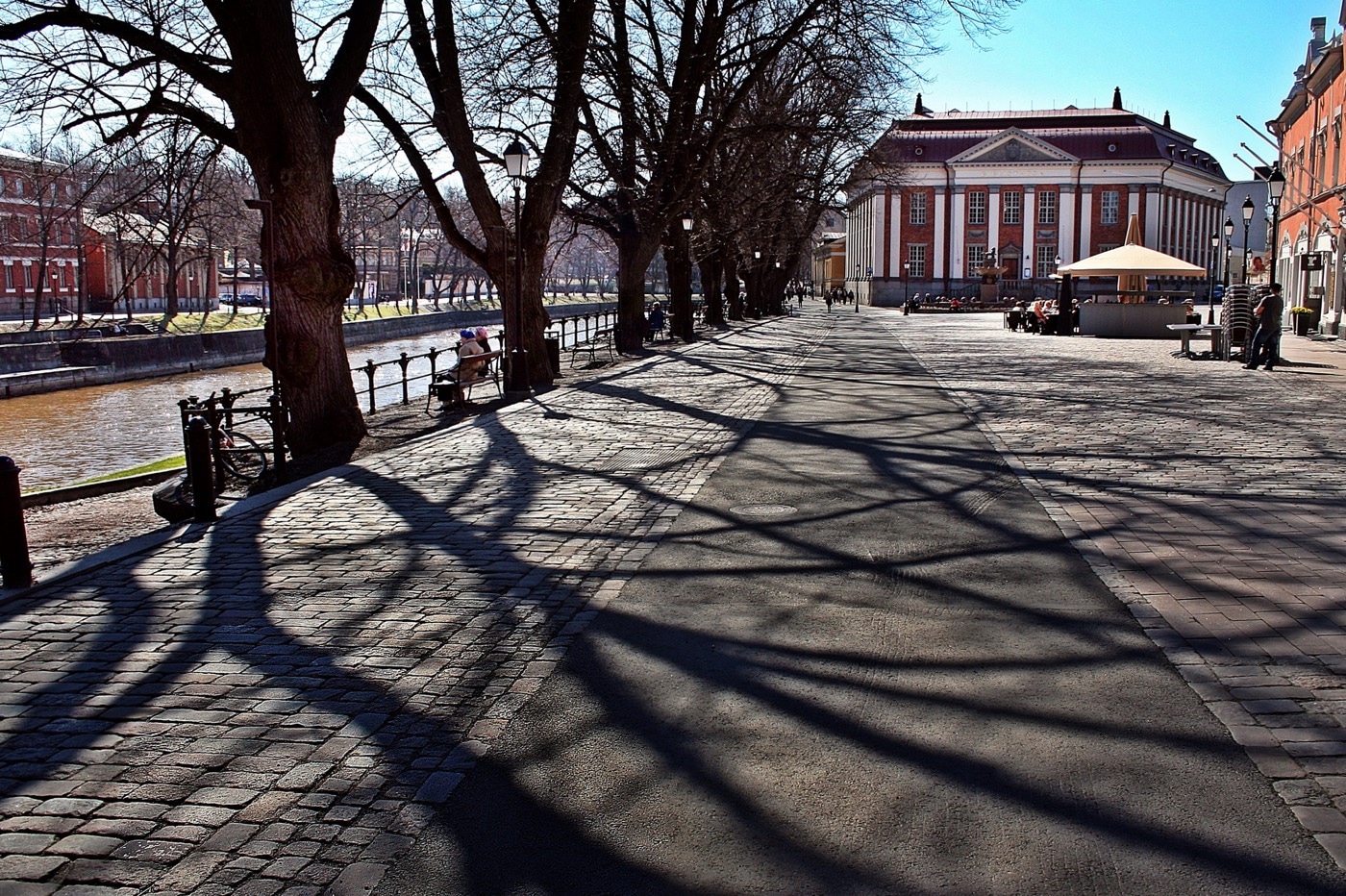It was almost summer in Finland and our plan was to spend the longest day of the year in Helsinki. The line from Great Gatsby flashed in my mind when Daisy plaintively asks Jordan and Nick, “What shall we do on the longest day of the year?” Take my word for it, Daisy”, you’ve got a lot of options in this city.
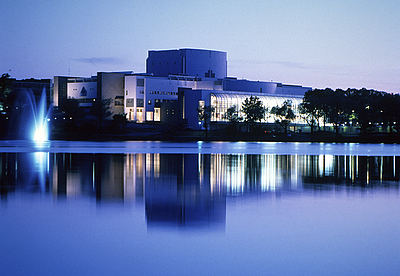
Classified as the “most liveable” city in the world according to Monocle’s 2010 Quality of Life survey, Helsinki has a handle on urban planning. You’ll find a universal awareness of eco-conscious practices along with a sophisticated lifestyle. Think riding a bicycle by day then stepping out to a two star Michelin restaurant in Manolos by night. Such is the diversity in Finland’s capital that distinguishes it from the rest of Europe, perfect for mainline and alternative minded tourists as well as adventurists seeking to get a good dose of the extremes the country offers. You have to remember that the Finns claim rights to the “sauna” and even though today the ancient practice of steam bathing has associations with much of Scandinavia and Russia, the ritual of sitting naked in a hot room for mental and physical relaxation, seems to have been universally integrated here. There are supposedly more than two million saunas in Finland for a population of just over five million and the Finns embrace it; calm and serene by nature with an inner peace, these people are interestingly reticent yet ready to reach out. In my week there I don’t think I heard a voice above a whisper and everyone was helpful.
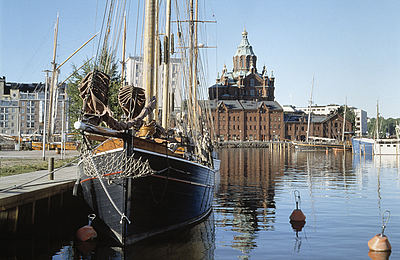
We’d tooled around the capital city for a few days, soaking in the culture, shopping and eating fabulous food, then felt like branching out. The summer solstice had come and gone and our inner Nicks inquired, “How about a weekend in the country?” Not on your life, Daisy. Now was our chance to discover what the Finns know about their country – that there’s a surprise lurking ‘round every corner. So, jumping in a rental vehicle with road trip written all over our faces, we decided on Turku, the former capital in the days when Finland was a part of Sweden, as our destination. Voted one of the Cultural Capitals of Europe in 2011 and the oldest city in the country, it promised another side of Finland, one steeped in history and the arts and Swedish-speaking yet. The June weather was warm, a bright sun saturated near endless days, and the temperature dropped only a few degrees after dusk. Like Gatsby and Nick, we shifted into adventure mode.
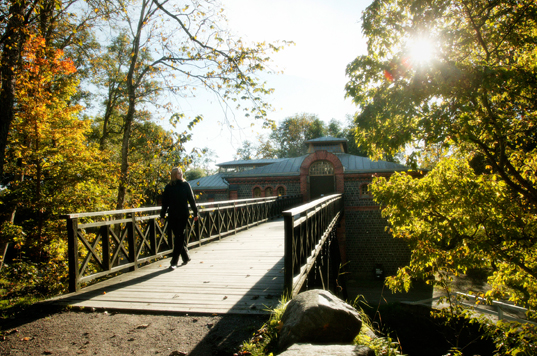
Even though Turku is only a little more than a hundred miles drive west of Helsinki, we couldn’t ignore what we could discover on the way. After about 60 miles of picturesque views from the highway and well away from urban hustle and bustle, we turned off and made our way toward Fiskars Village, a heritage environment which (we’d heard) was unique in Finland. A center of Finnish arts and crafts, this tiny rural community set in a beautiful river valley seemed like it stepped out of a fairy tale. Perhaps it was the rustically romantic look of the main street, its imposing red brick clocktower building shaded by towering trees and bordered by a gurgling river. It brought visions of an old New England mill town from pre-revolutionary times. I was on target with my guess when I found out that the village goes back to 1649 when it was an ironworks center during Finland’s industrial age. Most everyone is familiar with the famous orange-handled scissors which first saw the light of day here and are still produced today by the Fiskars Group, one of the country’s foremost design oriented enterprises. The well-preserved environment of this 17th century village is incredibly inspiring with a creative energy that must have evolved from its roots. Today it’s home and workplace year-round to a dynamic cooperative of artisans, designers and artists and subtly hints at becoming a nexus for a new creative spirit. We toured the Fiskars Museum, had a peek into a few of the artist’s studios then became spellbound by an old ironworks , the former foundry, now a modern day blacksmith in a barn set in an open field . Picking up some rough-hewn, hand-made iron trinkets, we felt like we made out like bandits when we learned the price.
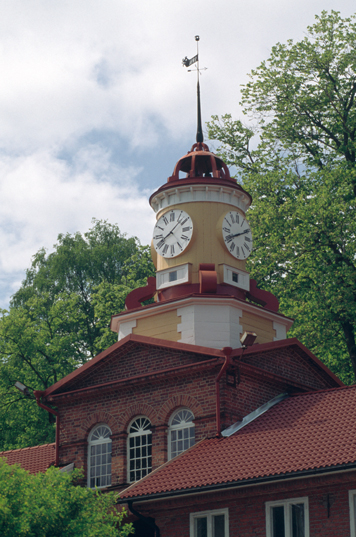
By now it was mid-afternoon and we were starving. The Kuparipaja restaurant, situated in the former copper smithy beside the Fiskars River, was bustling with activity, the downstairs café overlooking the picturesque rapids obviously the place to stop and re-charge. We feasted on fresh salmon and a perfect summer salad and had an awful time pulling ourselves away from the idyllic moment but decided a few photos and a last look around would do us. Jumping back in our 4 wheel, we were quickly back in 5th gear and zooming toward Turku.
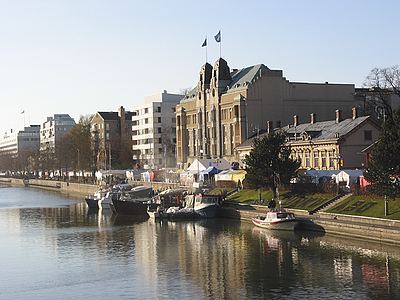
Driving Finland’s highways and back roads was a cinch and the Finns were great drivers but as we rolled into Turku late afternoon, clouds had descended and our fearless sun looked like it was bidding adieu. At first glance the city seemed modest by size, manageable and even quaint, with cobblestone streets and gorgeous pastel and honey-colored medieval facades fronting the antiquated buildings along the River Aura, a destination in its own right we’d soon see. The oldest parts like Turku Castle and the Cathedral were clear clues to the city’s legacy from the Middle Ages when it was Finland’s biggest and most important city. We strolled lush tree lined streets from where the Cathedral always had a vantage point and were eventually drawn to the beauty of the river which, it seemed, was never far from anywhere in town. The many bridges, cafes and restaurants lining it were all strung with lights and decorated for the city’s year-long culture celebration. And what a celebration it was.
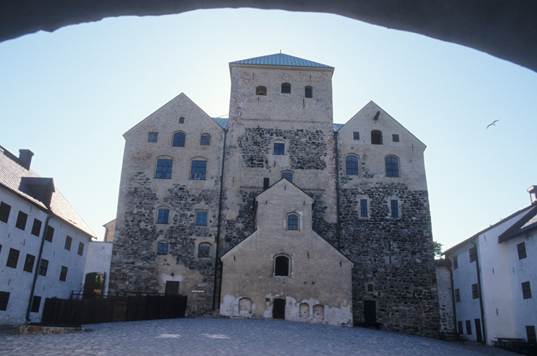
Known as a home to a youthful art scene, dominated by electronic music, animation, new circus and contemporary art, Turku seemed to be consumed by an artistic fever. There were a full 150 projects scheduled throughout the year taking place everywhere from hospitals, supermarkets, the city’s library and in the Logomo, a former engineering workshop for trains revamped into a spectacular exhibition center. Situated in the heart of an old industrial setting, we paid a stop there after studying a playful flock of giant elders bobbing in the river. The giant white birds by Reima Nurmikko and Satu Tuittila entitled Balancing and part of the Flux Aura environmental art project, were a platform for several dance performances on the water and inspired by the delicate balance between human beings and nature. It was a new way to put a spin on water we thought.
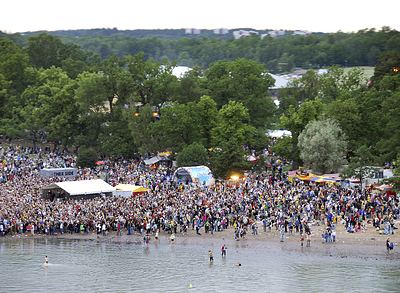
As the saying goes … the whole is equal to the sum of its parts. Logomo was the best example of integrating experiential exhibitions from the international arts scene with live performances including dance, theatre and music. Apart from its gritty warehouse feel, which gave a sense of something new and exciting breaking through to the mainstream, its enormous halls reminded me of the kind of giant gallery and performance spaces that put Manhattan’s Soho on the map. We were first treated to a daring retrospective of the legendary homoerotic works of Tom of Finland (alias Touko Laaksonen), from sketches made during his early years to later works. Tom’s depiction of iconic gay stereotypes brought him and his country notoriety throughout the world and proved that Finland could shake a fist at convention. Alice in Wonderland, the largest exhibit of contemporary photographic art ever seen in Finland, examined the shifting borderline between fantasy and reality and featured works by 30 international photographers, most of them Finnish. Finally, Fire! Fire! was a step into the world of flames with one of the key themes being the Great Fire of Turku in1827. We entered a darkened room where a huge miniature model of the city used light and smoke effects to show how the fire consumed the city destroying a town then largely made of wood. We were reminded again of Turku’s fascinating history and left the venue feeling that sense of surprise that is always a part of discovering new things.
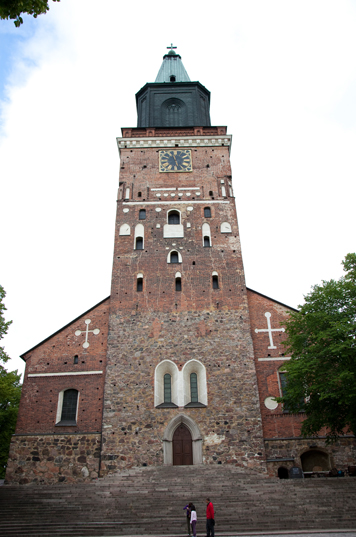
Dusk brought with it rain and after a night on the town, along the River Aura of course, we fell like blocks of cement on our hotel beds. Although drenched the next morning, Turku’s Market Square across the street was humming with townsfolk, each and every stall of fresh flowers, fruit and vegetables practically reaching out to shoppers. We marvelled at the size of the fruits, the vivid colors of the flowers and the presentation, like some large garlic cloves for example, wrapped in linen and tied with raffia bows. It was finally time for one last stroll before taking off again on our road trip. A bookstore window lured us inside and before we knew it we were ogling a display of vintage Finnish comic books upstairs on the second floor. Those few moments were like a step back in time to when merchants presented what they knew would keep people in their shop and curious to buy. We found the Tom of Finland Retrospective book, surely a collectible, among the piles on the shelves and grabbed it, a symbol of Finland’s cultural identity. I even struck up a conversation with a comic book collector, to my mind definitely not one of the masses. Turku had let us in on its little secret, one of the many tag lines that were devised for the media hype around the city when it was voted in – “Very special culture, only for you my friend.” Yes, it was for me in those 24 hours but also for you when you’re ready to heed the call.
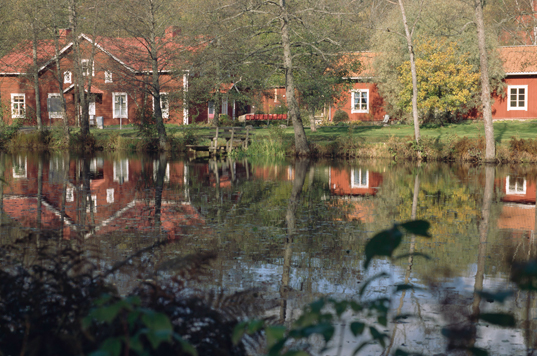
[alert type=white]
The country code for Finland is 358.
Where to Stay:
Fiskars Wardshus – Thought to be the oldest inn in Finland, this small hotel is designed to please the soul, the body and the eye. Fiskarsintie 14, Fiskars Village; 358 (0) 19 276 6510; www.wardshus.fi
Sokos Hotel Hamburger Bors – A modern annex adjoins an imposing 19th century building, formerly the Grand Hotel Bors post-World War I, with spartan rooms and an impressive breakfast buffet served in the drop dead fabulous Art Nouveau style YlaBors restaurant’s canary yellow dining room. Kauppiaskatu 6, Turku; 358 (0) 2 337 381; www.sokoshotels.fi
Radisson Blu Marina Palace Hotel – Nestled along the banks of the River Aura, the hotel’s 184 stylish rooms & suites boast a simple Finnish Baroque design. Free high-speed WiFi, 3 saunas and a fully equipped gym. Linnankatu 32, Turku; 358 (0) 20 1234 710; www.radissonblu.com
Where to Eat & Drink:
Ravintola Kuparipaja – Sit outside on the terrace in summer and drink in the spirit of Fiskars Village to the sounds of the gurgling rapids. Goran J. Ehrnroothintie 1, Fiskars Village; 358 (0) 19 237 045; www.kuparipaja.fi
Mami – Located on the banks of the River Aura with beautiful outdoor seating in summer and great views of the Cathedral. Linnankatu 3, Turku; 358 (0)2 231 1111; www.mami.fi
Rocca- The finest restaurant in Turku. The artwork evokes a kind of stylish Parisian whimsy. Linnankatu 3A, Turku; 358 (0) 20 755 9988; www.rocca.fi
Royal Curry House- Awarded Tripadvisor’s Certificate of Excellence in 2011 for its delicious, traditional Indian cuisine. Hämeenkatu 9, Turku; 358 (0) 44 748 4227. www.royalcurryhouse.fi
Bors Bar & Cafe – grab a table close to the windows in this beautifully detailed cocktail lounge to sip and people watch on Market Square, the center of action in Turku. Eerikinkatu 10, Turku;
358 (0) 10 764 3151; www.tokravintolat.fi
What to See & Do:
Fiskars Village info: 358 (0) 19 277 7504; www.fiskarsvillage.fi
Market Square, Turku – Don’t miss Saturday morning in summer when everyone and anyone is shopping the awesome goods.
The Cathedral – The oldest in the country we’re told, and don’t doubt it.
Logomo – Unlike any gallery space you’ve ever visited. Leave time to spend a few minutes in the wonderful shop. Koydenpunojankatu 14, Turku; 358 (0) 40 553 5860; www.turku.fi
[/alert]

